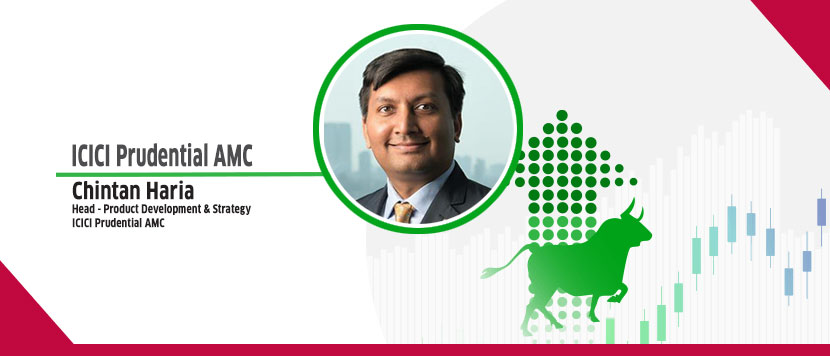Kotak Bank Shares Dip Amid CTO and COO Milind Nagnur's Resignation
Interview with Chintan Haria, Head-Product Development and Strategy, ICICI Prudential AMC

Last Updated: 11th December 2022 - 01:06 am
Based on an investor’s asset allocation, ETFs should be a part of one’s overall equity allocation; elucidates Chintan Haria, Head-Product Development and Strategy, ICICI Prudential AMC
What are some of the critical parameters that investors should study before investing in any ETF?
Investors must be aware that in an ETF as well, there is a market-related risk. Other parameters investors can consider are tracking error, liquidity, and expense ratio to name a few. For those investing in the sector or thematic ETF, there will be risks specific to those sectors or themes.
How should a retail investor approach ETFs in the present market scenario?
Based on an investor’s asset allocation, ETFs should be a part of one’s overall equity allocation. We believe broad market cap-based ETFs can be considered for enhancing one’s exposure to equities. In the case of evolved investors, they may consider smart beta or thematic ETFs.
ICICI Prudential has launched India’s first auto index fund. What is your take on the auto space?
In terms of volume, by 2030, India is expected to be the world's third-largest automotive market. As per capita income grows, auto penetration is likely to increase as affordability and income levels will rise, leading to increased discretionary spending. Also, in Union Budget 2021-22, the government introduced the voluntary vehicle scrappage policy, which is likely to boost demand for new vehicles after removing old unfit vehicles currently plying on the Indian roads. Availability of skilled labour at low cost, robust research & development centres, coupled with low-cost steel production provides great opportunities for auto as a sector to thrive. For an investor looking to tap into this theme, we believe investing in an auto index fund can be an optimal approach.
How is a Nifty 50 equal weight index different from a Nifty 50 index?
The core area of differentiation is the weights assigned to each of the 50 stocks in Nifty 50 universe. In an equal weight index, there is a 2 per cent cap assigned to each of the names, unlike Nifty 50 index, which is constituted on the basis of free float capitalisation. Here, a company with a higher free float is given higher weightage. Given this structure, Nifty 50 Equal Weight Index is less concentrated in the top five sectors as compared to Nifty 50 index, thereby providing a diversification opportunity
- Flat ₹20 Brokerage
- Next-gen Trading
- Advance Charting
- Actionable Ideas
Trending on 5paisa
Indian Market Related Articles
Disclaimer: Investment in securities market are subject to market risks, read all the related documents carefully before investing. For detailed disclaimer please Click here.
 5paisa Research Team
5paisa Research Team




